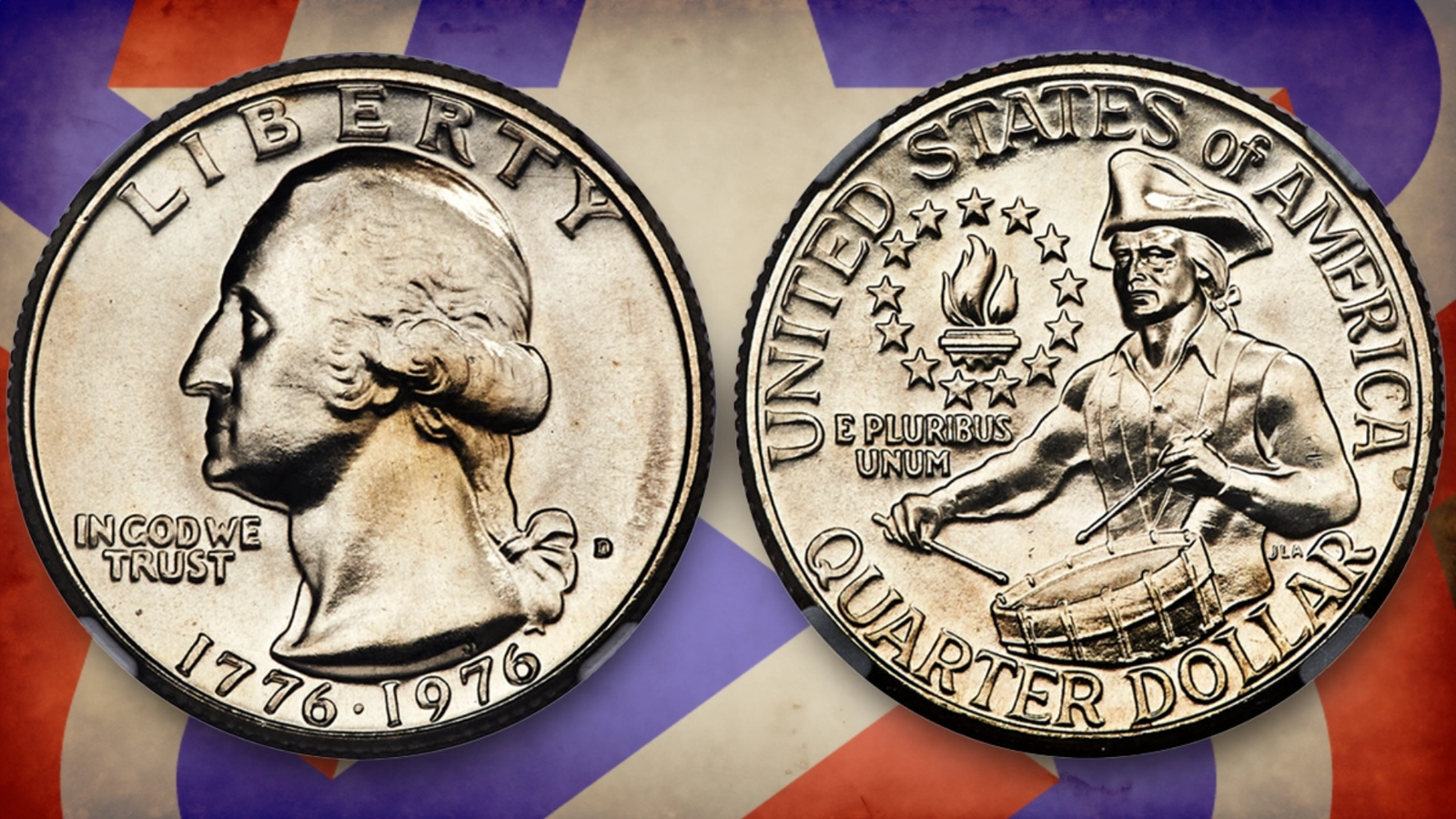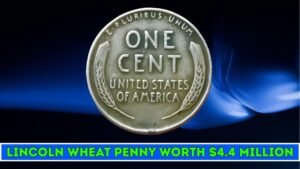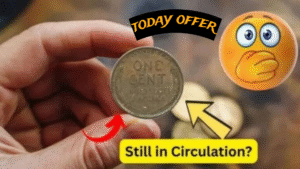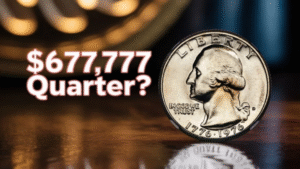1976 Bicentennial Quarters: Ever dumped your pocket change into a jar, only to wonder if one shiny 1976 quarter with a drummer boy could be worth a fortune? Sensational headlines scream $2.5 billion values, but that’s wild exaggeration—real rarities top $19,000. Minted for America’s 200th birthday, these patriotic coins hide errors and gems still circulating today. Let’s separate fact from hype and arm you with tips to uncover your own hidden wealth.
The Patriotic Backstory of the 1976 Bicentennial Quarter
The 1976 Bicentennial Quarter, nicknamed the “Drummer Boy” coin, rolled out to celebrate 200 years since the Declaration of Independence. It was part of a massive national party with parades, fireworks, and souvenirs everywhere. The U.S. Mint swapped the usual eagle on the back for a fresh design to honor the Revolutionary War spirit.
Design Details and Production Rundown
Artist Dennis R. Williams created the reverse side, showing a young colonial drummer marching with a torch raised high, surrounded by 13 stars for the original states. The front keeps George Washington’s classic portrait by John Flanagan, but the date reads “1776-1976” to bridge the founding and the anniversary. Words like “E PLURIBUS UNUM” top the stars, with “UNITED STATES OF AMERICA,” “QUARTER DOLLAR,” and the motto below.
The Mint struck over 1.6 billion from 1975 to 1976 at three spots: Philadelphia (no mark), Denver (“D”), and San Francisco (“S”). Regular ones are clad—copper-nickel layers over a copper core—for that familiar jingle. But San Francisco made special 40% silver proofs for collectors, with a frosty shine and heavier feel (6.25 grams vs. 5.67 for clad). These quarters poured into pockets during the bicentennial bash, becoming everyday keepsakes. Billions still float around in jars, vending machines, and tip trays, but a few with quirks stand out big time.
What Turns a Quarter into a Collector’s Jackpot?
Your average Bicentennial Quarter? Just 25 cents. But rarities with errors, top shape, or silver content can climb to thousands. Pros at PCGS or NGC grade them from 1 (beaten up) to 70 (like new), and scores above 68 spark serious bids.
Main Things That Pump Up the Price
Here’s what makes these coins shine:
- Minting Mix-Ups: Goofs like doubled images (double die) or strikes on wrong metal blanks (planchets) create one-offs.
- Perfect Preservation: Mint State (MS) or Proof (PR) at 68+ means no scratches and full sparkle.
- Silver Edge: “S” mint silvers beat clad versions with their precious metal and mirror finish.
- Scarce Grades: If only a few hit elite marks, buyers go wild.
Auction trends and discovery stories—like estate sale surprises—add extra buzz, but skip the overblown claims.
Debunking the $2.5 Billion Myth: Real Top Sales
Social media lit up in 2025 with tales of a Bicentennial Quarter worth $2.5 billion, supposedly still in change. It’s pure clickbait—no coin comes close. The actual champ? A 1976-S silver business strike (made for spending, not sets) in MS-69, sold for $19,200 at Heritage Auctions in 2019. This rare slip from San Francisco dazzled with golden tones and flawless drummer details. Only three like it exist at that grade. While not billions, this payout shows how overlooked errors from the mass mint run can deliver real rewards.
Standout Varieties to Chase in Your Change
The Bicentennial bunch has more than one winner. Focus on these error types and special strikes:
Hot Errors and Gems to Spot
- Double Die Obverse: Fuzzy doubling on “LIBERTY” or dates from a shaky die; a 1976-D MS-66 hit $8,400 in 2023.
- Wrong Planchet Strike: Hit on dime or nickel blanks for odd sizes; a dime version fetched $2,520 in 2024.
- Clipped Planchet: Missing chunk from the edge; one with a double clip sold for $89, but rarer ones climb higher.
- Off-Center Strike: Design shifted sideways; values up to $1,500.
The 1976 rush to make billions spawned these flubs, turning slip-ups into scores.
Value Guide: Top Bicentennial Quarters Compared
Scan this table for standout types and their peak sale prices (high grades from recent auctions). Values change, so appraise yours with experts.
| Variety | Key Feature | Mint Mark | Top Sale Price (Year) |
|---|---|---|---|
| 1976-S Silver Business | Unreleased silver, MS-69 | S | $19,200 (2019) |
| 1976-D Double Die Obv. | Doubling on front, MS-66 | D | $8,400 (2023) |
| 1976-S Silver Proof | PR-70 Deep Cameo | S | $13,500 (2019) |
| 1976-D Clad | Superb MS-68 | D | $6,463 (2017) |
| 1976 on Dime Planchet | Wrong blank error, MS-64 | None | $2,520 (2024) |
| 1976 Clipped Planchet | Edge missing, double clip | Varies | $89+ (2024) |
This snapshot spotlights why hunting errors pays off.
Hunting Strategies: Find Rarities in Loose Change
These treasures still mix with daily cash—billions made mean good odds if you look sharp. Start with simple scans:
- Date and Design Check: All 1976 qualify; eye “S” for silver (heavier, no copper stripe on edge).
- Error Hunt: Look for blurry letters, off-kilter designs, or weird shapes from bad blanks.
- Condition Quickie: No big dings and bright shine? It might grade high.
- Test Basics: Weigh for silver heft; clad won’t stick to magnets.
- Prime Spots: $10 bank rolls (40 quarters), flea markets, or grandma’s old purse.
Apps like CoinSnap snap pics for fast IDs, but send hot finds to graders.
Beginner Pointers: Collecting and Selling Safely
Dipping your toes in? Nail these habits:
- Gentle Grip: Cotton gloves only—skin oils hurt shine.
- Store Smart: Acid-free folders, not jars; skip cleaning to keep natural glow.
- Grade for Gold: PCGS or NGC seals add 30-50% to sales.
- Sell Savvy: Local shops for quick bucks; eBay for everyday; Heritage for big-ticket.
- Link Up: Reddit’s r/coins or CoinTalk for fake busts and buddy tips.
Most digs dig up tales, not treasures—but that’s the fun.
Final Hunt Wrap: From Hype to Hidden Gems
The $2.5 billion buzz grabs eyes, but Bicentennial Quarters’ real spark is in their freedom-themed flair and reachable rarities like the $19,200 silver stunner. These 25-cent nods to history prove surprises lurk in loose change. Ditch the drama—grab a scale and sift your stash. Your next quarter might just quarter a windfall. Get hunting!
FAQ: Busting Myths on Rare Bicentennial Quarters
Is a $2.5 billion 1976 quarter real?
No—it’s 2025 clickbait. The highest verified is $19,200 for a rare silver business strike.
How do I spot a silver Bicentennial Quarter?
Check for “S” mint mark; it weighs 6.25g with a solid silver edge, no copper band.
What’s the hottest error to find?
Double die obverse with fuzzy “LIBERTY”—can hit $8,400 in top shape.
Can I spend a valuable quarter?
Sure, it’s legal at 25 cents. But sell rarities to collectors for the real payoff.
Best places to sell a find?
Coin shops for fast cash; Heritage Auctions for max bids on errors.




